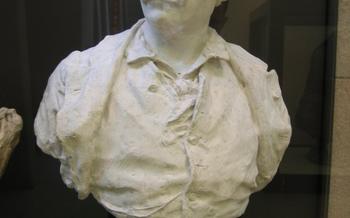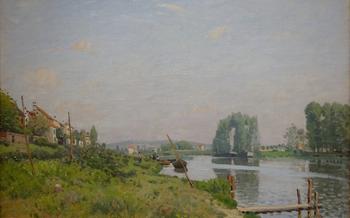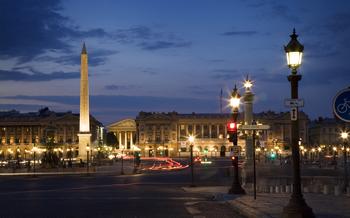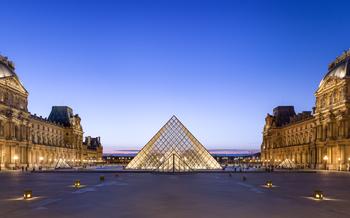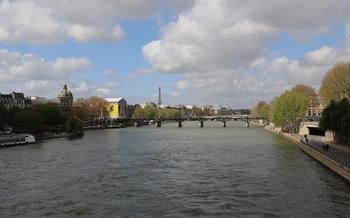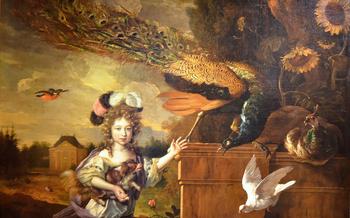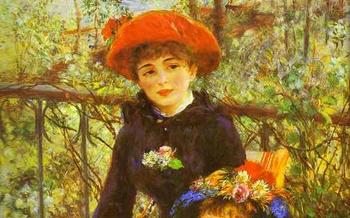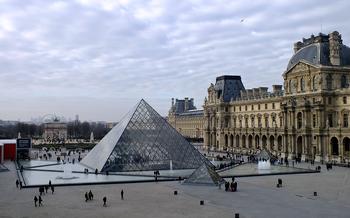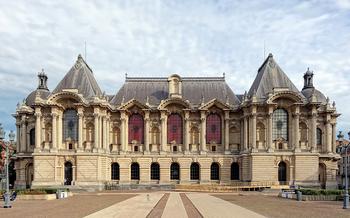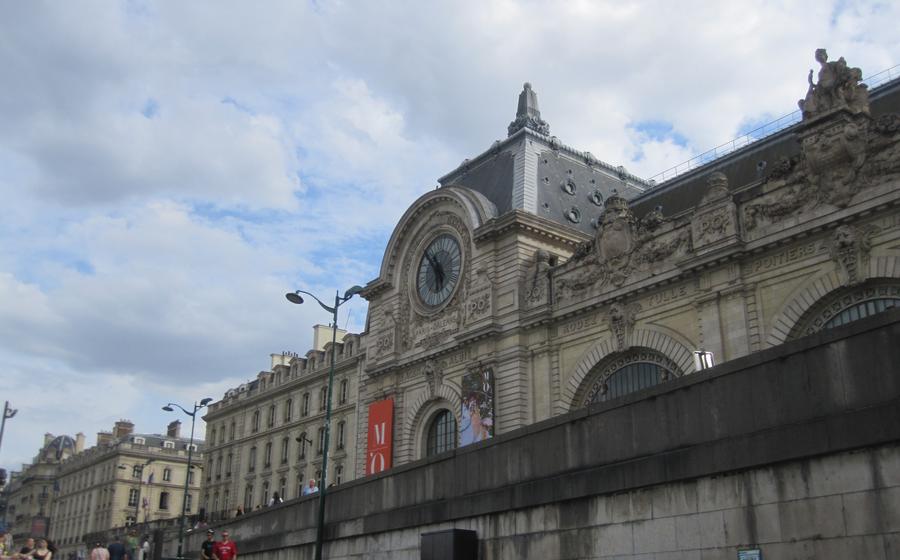
Musée d'Orsay
- Musée d'Orsay: A Masterpiece of Impressionist and Post-Impressionist Art
- History of the Museum
- Architectural Significance
- Location and Accessibility
- Must-see Highlights
- Discover the Masters of Impressionism
- Immerse Yourself in Post-Impressionism
- Beyond Painting: Sculpture and Decorative Arts
- Temporary Exhibitions and Special Events
- Unveiling the History of the Building
- Navigating the Museum's Layout
- Exploring the Musée d'Orsay's Highlights
- Hidden Gems and Lesser-Known Masterpieces
- Audio Guides and Guided Tours
- Museum Amenities and Services
- Planning Your Visit: Tips and Recommendations
- Transportation and Getting There
- Practical Information and Visitor Guidelines
Musée d'Orsay: A Masterpiece of Impressionist and Post-Impressionist Art
Nestled on the banks of the Seine, the Musée d'Orsay stands as a testament to the vibrant artistic legacy of France. Once a bustling railway station, the Gare d'Orsay, this grand edifice has been transformed into a haven for art enthusiasts, housing one of the world's most remarkable collections of Impressionist and Post-Impressionist masterpieces.
History of the Museum
The Musée d'Orsay's journey began in the mid-19th century when the Gare d'Orsay was constructed to accommodate the growing demand for rail travel. This architectural marvel, designed by Victor Laloux, symbolized the technological advancements of the era. However, as air travel gained prominence, the station fell into disuse, and its fate hung in the balance.
Architectural Significance
In 1977, a visionary plan emerged to repurpose the Gare d'Orsay into a museum dedicated to showcasing the artistic treasures of the late 19th century. Renowned Italian architect Gae Aulenti undertook this ambitious project, preserving the station's original structure while integrating modern elements. The result is a harmonious blend of historic charm and contemporary design, creating a unique and inspiring space for art appreciation.
Location and Accessibility
The Musée d'Orsay is strategically situated in the heart of Paris, on the Left Bank of the Seine, within easy reach of several transportation hubs. Metro lines 12 and RER C stop right at the Musée d'Orsay station, while bus lines 24, 63, 68, 69, 73, 83, 84, and 94 provide convenient access. For those arriving by car, parking is available nearby at the Quai Anatole France or the Rue de Bellechasse.
Must-see Highlights
A visit to the Musée d'Orsay is an immersion into the world's most celebrated artistic movement. Among the must-see highlights are Claude Monet's "Impression, Sunrise," considered the birth of Impressionism; Pierre-Auguste Renoir's "Dance at Le moulin de la Galette," capturing the exuberance of Parisian life; Vincent van Gogh's "Starry Night," a mesmerizing depiction of the night sky; and Édouard Manet's "Olympia," a controversial yet iconic portrait.
Discover the Masters of Impressionism
The Musée d'Orsay is a treasure trove of Impressionist masterpieces, home to works by some of the most celebrated artists of the movement. Let's take a closer look at three of these masters and their iconic contributions to the world of art.
Claude Monet: Pioneer of Impressionism
Considered the father of Impressionism, Claude Monet revolutionized the art world with his groundbreaking approach to capturing light and atmosphere. His works, such as "Impression, Sunrise" (1872), perfectly encapsulate the essence of Impressionism, with its vibrant colors, loose brushstrokes, and focus on the changing effects of light. Monet's paintings transport viewers to the heart of the natural world, capturing the beauty and fleeting moments of the French countryside.
Pierre-Auguste Renoir: Master of Light and Color
Pierre-Auguste Renoir was another influential figure in the Impressionist movement, known for his vibrant colors, soft brushstrokes, and portrayal of idyllic scenes. His works, such as "Bal du moulin de la Galette" (1876), exude a sense of joy and celebration, capturing the essence of Parisian life during the Belle Époque. Renoir's paintings are characterized by their luminous quality, with light playing a central role in creating a sense of depth and atmosphere.
Edgar Degas: Capturing Movement and Grace
Edgar Degas, a contemporary of Monet and Renoir, was renowned for his unique style that combined elements of Impressionism and Realism. His works, such as "The Dance Class" (1871-1874), showcase his fascination with movement and the human form. Degas's paintings are characterized by their innovative compositions, capturing dancers in mid-motion and exploring the relationship between light and shadow.
Immerse Yourself in Post-Impressionism
Vincent van Gogh: Expressionism and Emotional Intensity
The Musée d'Orsay is home to an impressive collection of Vincent van Gogh's works, showcasing the artist's unique style and emotional intensity. Among the highlights is the iconic "Starry Night" (1889), a masterpiece of Post-Impressionism that depicts the turbulent night sky over a small village. The painting captures van Gogh's inner turmoil and his profound connection to nature. Other notable works by van Gogh include "The Potato Eaters" (1885), "Irises" (1889), and "Self-Portrait" (1887), each revealing the artist's struggles, hopes, and artistic genius.
Paul Cézanne: Geometric Forms and Color Planes
Paul Cézanne's works at the Musée d'Orsay demonstrate his groundbreaking approach to painting, characterized by geometric forms and simplified color planes. His still lifes, such as "Still Life with Apples" (1895-1900), exemplify his meticulous attention to form and composition. Cézanne's landscapes, such as "Mont Sainte-Victoire" (1895-1906), reveal his fascination with the interplay of light, color, and perspective. Through his innovative techniques, Cézanne laid the foundation for Cubism and modern art.
Henri de Toulouse-Lautrec: Parisian Nightlife and Portraits
Henri de Toulouse-Lautrec's works capture the vibrant energy of Parisian nightlife and the bohemian world of Montmartre. His paintings and posters, such as "The Moulin Rouge" (1892), depict the lively atmosphere of cabarets and dance halls. Toulouse-Lautrec was also a gifted portraitist, and his works, such as "Portrait of Jane Avril" (1892), reveal his keen observation and empathy for his subjects. Through his art, Toulouse-Lautrec provides a glimpse into the hidden corners of Parisian society at the turn of the 20th century.
Beyond Painting: Sculpture and Decorative Arts
While the Musée d'Orsay is primarily known for its paintings, it also houses an impressive collection of sculptures and decorative arts. Auguste Rodin, the master of sculpture, is well-represented with works like "The Thinker" and "The Kiss," capturing the essence of human emotion and movement. Edgar Degas, known for his paintings of dancers, also excelled in sculpture, creating delicate and graceful representations of ballerinas and horses in motion.
The museum boasts a rich collection of Art Nouveau decorative arts, showcasing the intricate designs and craftsmanship of this artistic movement. Visitors can admire furniture, glassware, and jewelry by renowned artists like Émile Gallé, Louis Majorelle, and René Lalique. These decorative objects reflect the Art Nouveau style's emphasis on organic forms, natural motifs, and flowing lines.
Exploring the Musée d'Orsay's sculpture and decorative arts collection offers a deeper understanding of the artistic landscape of the late 19th and early 20th centuries. These works provide a glimpse into the diverse artistic expressions and techniques that flourished during this transformative period.
Temporary Exhibitions and Special Events
The Musée d'Orsay presents a dynamic program of temporary exhibitions alongside its permanent collection. These exhibitions often delve into specific themes, explore the work of lesser-known artists, or showcase new acquisitions. Past exhibitions have focused on Impressionist landscapes, the influence of Japanese art on Western artists, and the history of photography.
The museum also organizes a variety of special events, such as lectures, workshops, and film screenings. These events offer visitors the opportunity to engage with the museum's collection in a more interactive and immersive way. They often feature talks by curators, artists, and other experts in the field of art history.
To stay informed about upcoming exhibitions and events, check the Musée d'Orsay's official website. It's advisable to plan your visit accordingly to catch a temporary exhibition that aligns with your interests. Advance ticket reservations are recommended for popular exhibitions to avoid long lines.
The Musée d'Orsay is more than just a repository of masterpieces; it's a vibrant cultural hub that constantly evolves and offers new experiences to its visitors. Whether you're an art enthusiast, a history buff, or simply seeking a unique cultural encounter, the Musée d'Orsay promises an unforgettable journey into the world of Impressionism and Post-Impressionism.
Unveiling the History of the Building
The Musée d'Orsay proudly stands on the banks of the Seine, once home to the Gare d'Orsay, a bustling railway station built for the 1900 World's Fair. This magnificent structure, designed by architects Victor Laloux, Lucien Magne, and Émile Bernard, was a testament to the grandeur of the Belle Époque. Its graceful Art Nouveau style, with its sweeping glass roof and intricate ironwork, symbolized the optimism and progress of the era.
In 1939, as train travel evolved, the Gare d'Orsay fell into disuse. Its future hung uncertain until 1977 when President Valéry Giscard d'Estaing envisioned transforming it into a museum dedicated to 19th-century art. This ambitious project required meticulous planning and architectural ingenuity.
The transformation of the Gare d'Orsay into the Musée d'Orsay was a complex undertaking. Architects Gae Aulenti and Bruno Gaudin meticulously preserved the station's original structure, while adapting it to its new purpose as a museum. They ingeniously integrated modern elements, such as glass walkways and mezzanines, to create a harmonious blend of old and new.
The result is a stunning fusion of architectural styles. The station's grand concourse became the museum's main hall, providing visitors with a breathtaking introduction to the treasures within. The original clock tower, a symbol of the station's past, now offers panoramic views of Paris. Throughout the museum, historical elements, such as the station's platforms and tracks, are cleverly incorporated into the exhibition spaces, creating a unique and immersive experience.
Navigating the Museum's Layout
The Musée d'Orsay is a vast and complex museum, but its layout is well-organized and easy to navigate. The galleries are arranged chronologically, with the earliest works on the lower floors and the most recent works on the upper floors. Each gallery is dedicated to a specific period or movement in art history, and there are clear signs and maps to help you find your way around.
If you are short on time, you can focus on the highlights of the collection, which are displayed in the main galleries on the ground floor. These include works by Monet, Renoir, Degas, Van Gogh, Cézanne, and Toulouse-Lautrec. If you have more time, you can explore the smaller galleries on the upper floors, which feature works by lesser-known artists and special exhibitions.
Here are some tips for planning your visit to the Musée d'Orsay:
- Start by getting a map of the museum from the information desk.
- Decide which galleries you want to visit, and plan your route accordingly.
- Allow plenty of time to explore each gallery, and don't be afraid to take breaks in the cafés or restaurants.
- If you are interested in learning more about the works of art, consider booking a guided tour or renting an audio guide.
- The museum is busiest on weekends and during the summer months. If you want to avoid the crowds, try to visit on a weekday morning or evening.
Exploring the Musée d'Orsay's Highlights
Among the many masterpieces housed within the Musée d'Orsay, several works stand out as must-sees for any visitor. These iconic paintings have captivated audiences for generations and continue to inspire and awe art enthusiasts worldwide.
-
"Starry Night" by Vincent van Gogh (1889): This quintessential masterpiece by the Dutch master is an expressionist tour de force, depicting a swirling night sky over a tranquil village. The vibrant blues and yellows create a sense of cosmic energy and movement, inviting viewers to immerse themselves in van Gogh's unique perspective.
-
"Dance at Le moulin de la Galette" by Pierre-Auguste Renoir (1876): A celebration of Parisian life and leisure, Renoir's masterpiece captures the joyous atmosphere of a popular dance hall. The painting's soft brushstrokes and luminous colors convey a sense of warmth and camaraderie, transporting viewers to the heart of the bustling city.
-
"Luncheon on the Grass" by Édouard Manet (1863): Manet's groundbreaking work caused a scandal when it was first exhibited, challenging traditional conventions and blurring the lines between the classical and the modern. The painting depicts a group of men and women picnicking in a forest, with a nude woman boldly positioned in the foreground, creating a sense of tension and intrigue.
-
"Olympia" by Édouard Manet (1863): Another controversial masterpiece by Manet, "Olympia" portrays a courtesan reclining on her bed, accompanied by a black maid. The painting's realism and direct gaze challenge societal norms and confront viewers with the complexities of class and gender.
Hidden Gems and Lesser-Known Masterpieces
Beyond the iconic works that draw crowds, the Musée d'Orsay is home to a treasure trove of hidden gems and lesser-known masterpieces. These works offer a deeper insight into the diverse artistic movements of the late 19th century.
Underrated Works and Artists:
- Édouard Vuillard: Discover the intimate and poetic world of Vuillard, a Nabi artist known for his domestic scenes and portraits. His paintings capture the essence of Parisian life with a unique blend of symbolism and realism.
- Gustave Caillebotte: Explore the urban landscapes and social commentary of Caillebotte, whose works often depicted the transformation of Paris during the Industrial Revolution. His paintings offer a glimpse into the city's rapidly changing social and economic landscape.
- Henri Fantin-Latour: Admire the delicate flower paintings and group portraits of Fantin-Latour, a master of still life and portraiture. His works are characterized by their soft, muted colors and introspective atmosphere.
Thematic or Chronological Displays:
- The Nabis Room: Immerse yourself in the world of the Nabis, a group of avant-garde artists who sought to create a new, more subjective form of art. The room features works by Vuillard, Bonnard, and Maurice Denis, among others.
- The Impressionist Landscapes Room: Explore the evolution of Impressionist landscape painting through works by Monet, Renoir, and Pissarro. The room showcases the artists' experimentation with light, color, and atmosphere, capturing the essence of the French countryside.
Special Collections and Exhibitions:
- The Musée d'Orsay's Sculpture Collection: Discover a diverse collection of sculptures from the late 19th century, including works by Rodin, Degas, and Maillol. The collection offers a glimpse into the development of sculpture during this period, from realism to symbolism and beyond.
- Temporary Exhibitions: The Musée d'Orsay regularly hosts temporary exhibitions that focus on specific artists, movements, or themes. These exhibitions provide an opportunity to explore different aspects of late 19th-century art and culture.
Audio Guides and Guided Tours
Enhance your visit to the Musée d'Orsay with a range of audio guides and guided tours that delve deeper into the masterpieces and stories within its walls.
Audio Guides:
-
Languages and Availability: Navigate the museum's highlights with audio guides available in various languages, including English, French, Spanish, German, Italian, Chinese, Japanese, and Korean.
-
Themes and Duration: Choose from general audio guides that provide an overview of the museum's collection to thematic guides focusing on specific artists, movements, or periods. Guided tours typically last around 5 to 2 hours.
-
Tips for Choosing the Right Option: Consider your interests and time constraints when selecting a tour. If you're short on time, the general audio guide is a good starting point. For a more in-depth exploration, opt for a guided tour led by an expert.
-
Booking Information and Prices: Audio guides can be rented at the museum's information desk, while guided tours need to be booked in advance online or through the museum's website. Prices vary depending on the type of tour and language.
Guided Tours:
-
Languages and Availability: Guided tours are led by knowledgeable and passionate guides who provide insights into the museum's collection and history. Tours are available in various languages, including English, French, Spanish, German, and Italian.
-
Themes and Duration: Choose from a variety of guided tours that explore specific themes, artists, or periods in more detail. Guided tours typically last around 5 to 2 hours.
-
Tips for Choosing the Right Option: Consider your interests and time constraints when selecting a tour. If you have specific interests, choose a tour that focuses on a particular artist or movement. If you're short on time, opt for a shorter tour that covers the museum's highlights.
-
Booking Information and Prices: Guided tours need to be booked in advance online or through the museum's website. Prices vary depending on the type of tour and language.
Museum Amenities and Services
The Musée d'Orsay offers a range of amenities and services to enhance your visit.
-
Cafés and Restaurants: Take a break from your art exploration and indulge in a delightful meal or snack at the museum's cafés and restaurants. Enjoy a panoramic view of the city while savoring French cuisine at the rooftop restaurant, "Le Restaurant du Musée d'Orsay."
-
Gift Shops and Bookstores: Discover a treasure trove of art-related souvenirs, books, and merchandise at the museum's gift shops and bookstores. Take home a piece of your Musée d'Orsay experience or find the perfect gift for an art enthusiast.
-
Cloakroom and Storage Facilities: Leave your belongings securely at the museum's cloakroom and storage facilities. This allows you to explore the galleries without the burden of heavy bags or coats.
-
Accessibility for Visitors with Disabilities: The Musée d'Orsay is committed to providing an accessible and inclusive environment for all visitors. Wheelchair ramps, elevators, and adapted restrooms are available throughout the museum. Additionally, the museum offers sign language tours and audio guides in multiple languages for visitors with hearing impairments.
Planning Your Visit: Tips and Recommendations
To make the most of your visit to the Musée d'Orsay, careful planning is essential. Here are some valuable tips and recommendations to ensure an enriching and enjoyable experience:
-
Best time to visit: The museum is busiest during peak tourist season (June-August) and on weekends. Consider visiting on a weekday or during the shoulder season (April-May or September-October) for a more relaxed atmosphere. Aim to arrive early in the morning or late in the afternoon to avoid crowds.
-
Recommended duration: Allocate at least 2-3 hours for a comprehensive visit, allowing ample time to appreciate the highlights and explore the diverse collections. If you're particularly interested in a specific movement or artist, plan for a longer visit.
-
Combining with other attractions: The Musée d'Orsay is conveniently located near other popular cultural destinations. Consider combining your visit with a stroll along the Seine River, a visit to the Louvre Museum, or a walk through the Tuileries Gardens for a well-rounded cultural experience.
-
Itineraries for different interests: The museum offers a variety of thematic itineraries tailored to different interests. For art enthusiasts, the "Impressionist Masterpieces" itinerary highlights key works by Monet, Renoir, Degas, and Pissarro. Alternatively, the "Post-Impressionist Revolution" itinerary delves into the works of Van Gogh, Cézanne, and Toulouse-Lautrec.
Transportation and Getting There
The Musée d'Orsay is conveniently located in the heart of Paris, making it easily accessible by various transportation options. The closest metro stations are Solférino (Line 12) and Musée d'Orsay (RER C). Several bus lines also stop nearby, including the 24, 63, 68, 69, 73, 83, 84, and 94.
If you prefer to drive, there are limited parking options in the vicinity. The closest parking garage is the Indigo Pont Royal located a short walk from the museum. However, it is important to note that parking in Paris can be challenging and expensive.
For a more eco-friendly option, consider renting a bicycle and exploring the city on two wheels. There are several bike rental shops near the Musée d'Orsay, and dedicated bike lanes make cycling in Paris relatively safe and enjoyable.
Insider Tip: Take advantage of the Vélib' bike-sharing system, which offers convenient rental options at affordable prices. Stations can be found throughout the city, including near the Musée d'Orsay.
Practical Information and Visitor Guidelines
To ensure a smooth and enjoyable visit to the Musée d'Orsay, it's essential to be aware of the practical information and visitor guidelines. The museum's opening hours are typically from 9:30 am to 6 pm, with extended hours on Thursdays until 9:45 pm. Admission fees vary depending on the time of year and special exhibitions but generally range from €14 to €1Concessions are available for students, seniors, and visitors with disabilities.
Photography is allowed in the museum's permanent collection, but using a flash or tripod is prohibited. Visitors should be mindful of other visitors and avoid blocking their views or making excessive noise. The museum provides a cloakroom and storage facilities for visitors' convenience, where they can safely leave their belongings.
The Musée d'Orsay is committed to accessibility for visitors with disabilities. The museum offers wheelchairs, elevators, and accessible restrooms throughout the building. Visitors with disabilities can also request assistance from the museum staff, who are happy to provide guidance and support.
To enhance your visit, consider purchasing an audio guide or booking a guided tour. Audio guides are available in multiple languages and provide in-depth information about the museum's collection. Guided tours are led by knowledgeable experts who can share fascinating insights and stories behind the masterpieces.
By following these practical guidelines, you can make the most of your visit to the Musée d'Orsay and immerse yourself in the world of Impressionism and Post-Impressionism.
